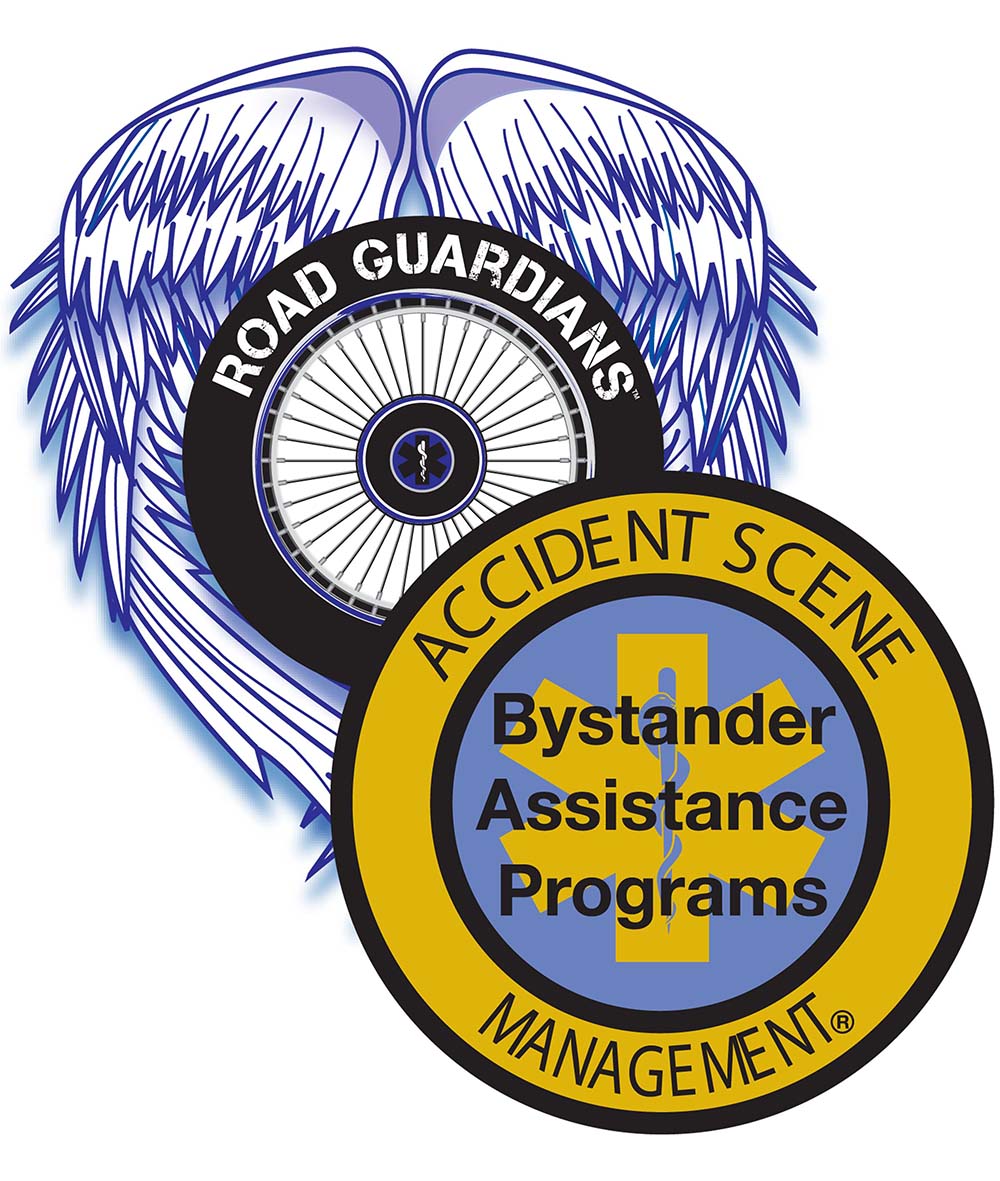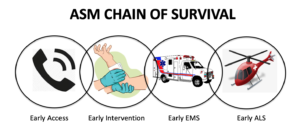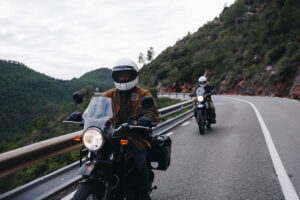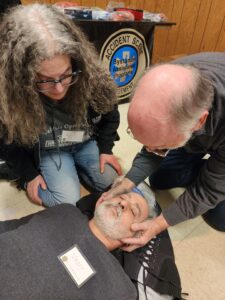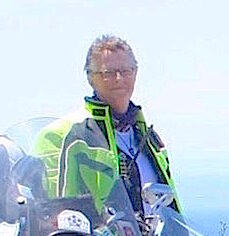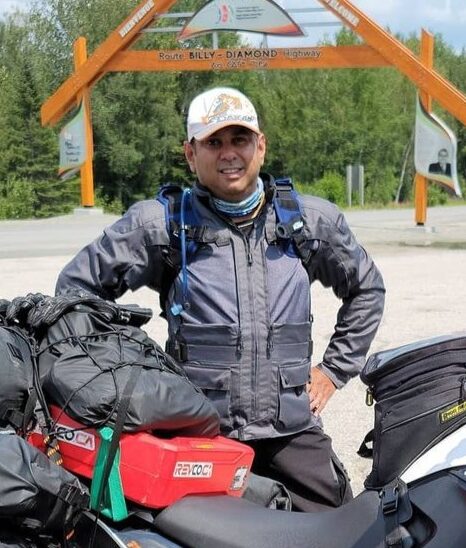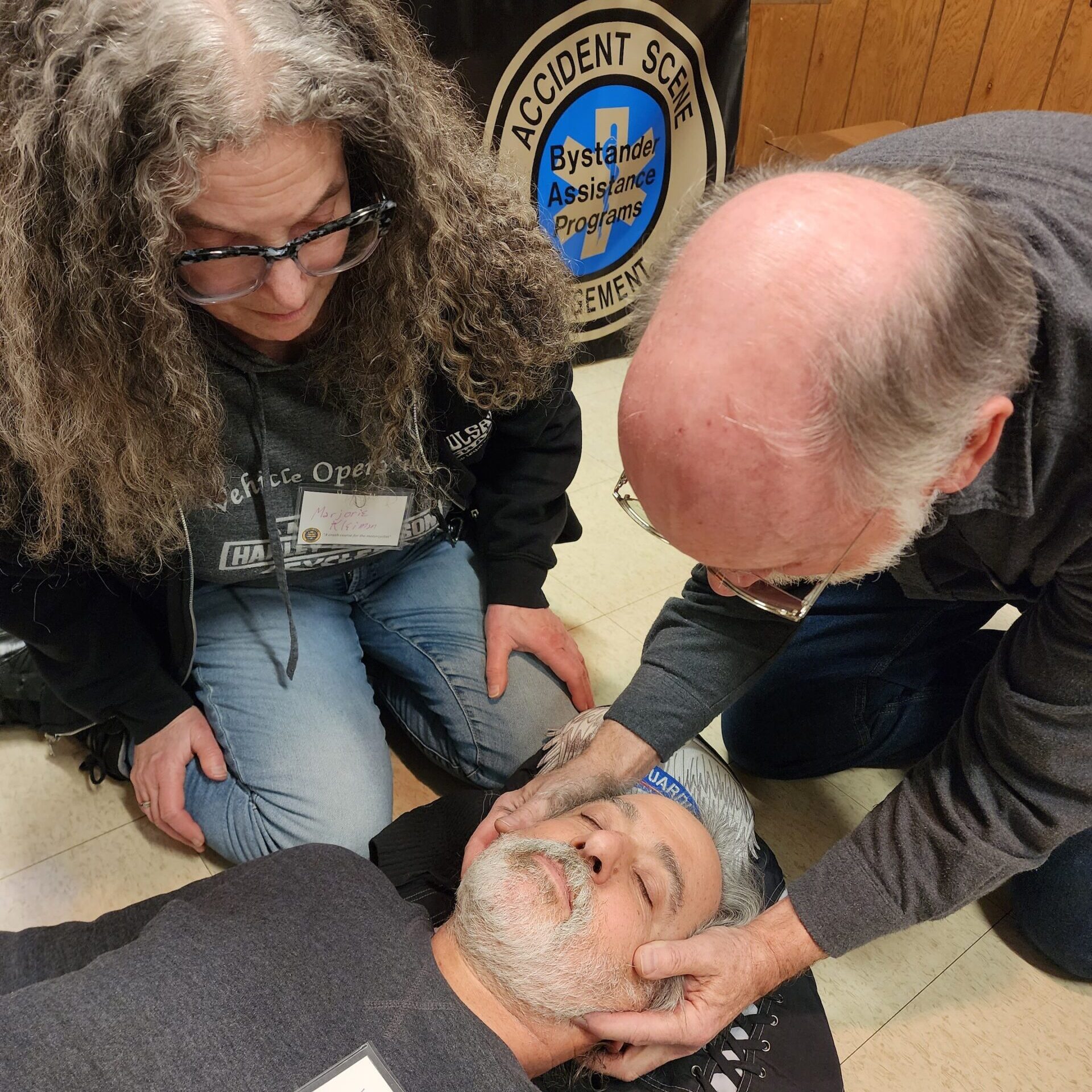
By Tony “Pan” & Vicki Sanfelipo
The American Heart Association developed a “Chain of Survival” when considering responses to emergencies, especially cardiac in nature. That chain has distinct links, each adding to the overall strength and effectiveness of the entire chain. There are four links:
1. Early access
2. Early intervention
3. Early EMS (Emergency Medical Service)
4. Early advanced life support
Reports and studies have applauded the improvement of the EMS, starting with large dispatch centers, better trained and equipped technicians, new advanced ambulances and the increased availability of medical air-transport helicopter services. These improvements and advancements continue to be extolled in the studies, resulting in more money becoming available to purchase the latest innovations in emergency medicine.
The problem with many studies is that the results can be manipulated to portray a certain desired outcome. For instance, reporting a dramatic improvement in outcomes in emergency situations, equating those outcomes to the above advancements, could be misleading if the studies are conducted in major metropolitan areas. Larger cities can afford highly trained paramedic services and level-one trauma centers. They can achieve a 5-to-8-minute response time to get high-level help to an injured person. Couple that with a 5 to 10-minute transport to the trauma center, and outcomes can be anticipated to be the best that could be expected.
Outside of the motorcycle commuter using his or her bike to travel to work and back or take a trip to a neighborhood business, most bikers enjoy riding away from urban centers. In the event of a serious crash in a rural area, several concerns come to mind. First, it’s more likely that first responders or EMT basics might be responding to your emergency instead of the highly trained paramedics you find in metropolitan areas. This is not intended to belittle the first responders or EMTs, but they are not trained or licensed to administer many lifesaving drugs, and many cannot administer IV therapy. Paramedics can also perform some surgical techniques in the field, like tracheotomies and chest taps. Second, you can not count on having a team at the station waiting for an emergency call. As a rule of thumb, the further you are away from a metropolitan area, the less likely you will be to have a paramedic team waiting for a call.
Unlike major cities with a 5-minute response time, a crash in rural America can have response times of anywhere from 5 to 55 minutes, depending on where the incident occurred and the terrain leading to the crash site. How does this relate to the chain of survival? The chain is only as strong as its weakest link. In the case of a rural crash that is 30 miles from the nearest small town, early intervention is the link I’m most concerned with. Who will perform this early intervention? Typically, bikers ride with a companion or in a group when taking a trip outside of the city. Those riding companions ultimately become the first responders or early interveners. If they are trained in basic lifesaving skills, the outcome could be good. If a rider is alone, he may be left up to the skills and education of a passerby.
It is my hope that the weakest link in the chain of survival, the early intervention link, is addressed in conversations among medical professionals in the emergency medicine field. Training bystanders in life-sustaining care is essential to improving the outcomes of trauma victims in rural settings. Even if the best-trained medical professionals are dispatched to a crash scene, if the response time is greater than 5 minutes, a critically injured, non-breathing, or seriously bleeding patient may not be alive when paramedics arrive.
As a biker, retired National Registry Emergency Medical Technician (NREMT) and a lead instructor for Accident Scene Management (ASM), I am convinced that training bystanders is the best way to improve the EMS as it exists today. ASM is the only nationally accredited Motorcycle Trauma Training course in the country.
Some myths about helping the injured persist today, like not getting involved because of the threat of lawsuits. Anyone can try to sue anyone for almost any reason, but that’s not to say those suits will ever see a courtroom. State legislatures have seen the light and, many years ago, passed some form or another of a Good Samaritan Law. Basically, if a person tries to help someone and does not act grossly negligent, the chance of being sued for trying to help someone is almost nonexistent.
When ASM talks about bystander training, it’s not talking about first aid or CPR, but rather, motorcycle-specific trauma training. First aid is for Boy Scouts and hikers out in the woods. CPR is for cardiac problems. ASM deals with traumatic roadside emergencies like airway, breathing issues, severe bleeding, internal injuries, shock and Spinal Stabilization. There are things a bystander can be trained to do that will keep a person alive until help arrives. ASM students learn the ABCSS of Trauma, which teaches them the priorities of treatment. In the case of a non-breathing crash victim, it is recommended that the rescuer use the jaw-thrust method, which is a way of opening the airway while providing cervical spine (neck) immobilization. The most likely reason a person is not breathing is that their tongue has relaxed and fallen to the back of the throat, blocking the airway. The first course of action is to do a jaw thrust while keeping the neck straight to lift the tongue off of the back of the throat. If the person does not breathe on their own, the lack of breathing could be from a neck injury. Rescue breaths need to be implemented using a rescue breathing barrier. Two breaths should be given initially, then one breath every 6 seconds.
Severe bleeding is also a priority. Stop the bleed is an element of ASM training that teaches pressure dressings and tourniquets. To see a list of classes, go to www.roadguardians.org
